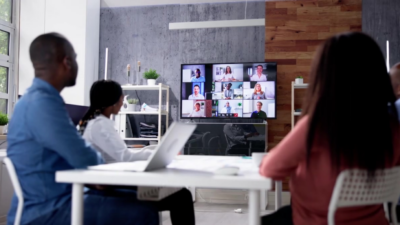At the center of company innovation, productivity, employee attraction/retention, engagement, and recruiting is one pivotal function: community—community of the workplace. Community of the workplace encompasses a variety of emotions and human needs including having a place to escape, a space that feels like a second home, cutting-edge technology, a inter-building communication system, and a connectedness among the tenants in the building. Community is quickly gaining respect as a crucial organ of a company—and of a building—and both employees and tenants are walking away from employment or tenancy opportunities if the sense of community doesn’t fit. In the Twin Cities metro area, landlords are putting more money into their TI packages and their building renovation than they ever have before. Additionally, companies are budgeting for state-of-the-art build-out within their space in order to keep their current employees happy and attract new employees.
Over the past decade or so, the relationship between work and life has dramatically changed; the two are no longer held in balance but, rather, work and life have more or less merged. This shift has heightened the connection between employees and they spaces where they work. Therefore, employees’ workspaces are gaining importance and have become a reason why employees choose to work at one company over another. The work/life merger has given employers more 24/7 communication to employees, causing them to expect on-demand, “always on” access to their staff. With this expectation, both the employer and the landlord must re-think what work/life integration truly means for their buildings. This focus on workplace and building design has become one of the main points of differentiation for companies. Not all companies have the same headcount, or capital, as Google or Amazon to build out a huge campus or even occupy a full floor, which is why a building’s amenities, third workspaces, common areas, community involvement, nature, and technology integration have become so crucial for both landlords and companies alike.
A building or office space should emulate the home, work, play trifecta of an employee’s day-to-day life, and this thought has driven the popularity of the “resimercial” trend. Resimercial, which is a combination of “residential” and “commercial,” is a design approach that brings aspects of home into the contemporary workspace. By creating homelike environments – where employees truly enjoy spending time – companies and landlords can accommodate the increased demand placed on employees and help foster a sense of community. Buildings and spaces should be integrated with the employee experience, the company, and their clients, so it is crucial that the building, employee workspace, and overall community align well with a company’s culture and values. Gone are the days of dark lobbies lacking greenery or natural light, buildings without a state-of the-art fitness studio, or comfortable spaces to relocate to for casual meeting or personal time. Today, landlords are recognizing their need to be strategic, to pioneer new ideas, and to begin competing with other buildings in terms of their amenity package and community feel. Some are even going so far as to hire professional building programming groups, like the Musicant Group, a local firm that specializes in just this—creating a “community” within a building through events like wine tastings, group fitness, movie nights, and mini-conferences. These strategies help foster building’s sense of community, which can sometimes lead a company to or away from a lease.
Additionally, the more ‘escape spaces’ an employee has, the less likely they are to work remote. Community is connected to the culture of a company, and the more employees are working from home, the less the culture or community of a company can thrive. Once again, community continues to be a pillar of major importance for company success and employee engagement. Today, work is no longer a 9-5. Work is a 24/7 for most. The need for inspiration, support and excitement is crucial to employee happiness and a company’s success.
In order to fully ignite and attend to those feelings, the company and the building, must—you guessed it—foster the right community.

 Colliers Insights Team
Colliers Insights Team
 Anthony Shell
Anthony Shell
 Andrew Steele
Andrew Steele
 Aaron Jodka
Aaron Jodka Michelle Cleverdon
Michelle Cleverdon